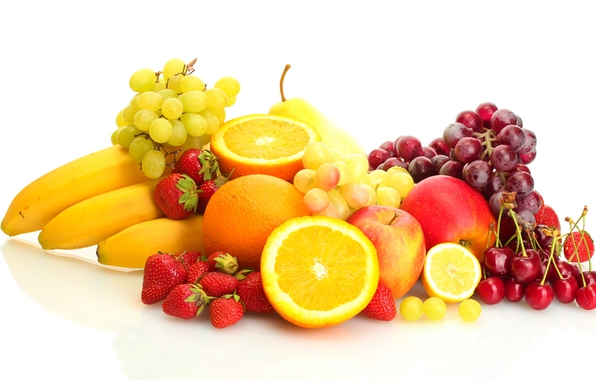Rise in Fruit Snacking Bodes Well for Marketers

Consumers are finding more and more occasions to eat fresh fruits and retailers might be wise to try to capitalize on this trend.
That’s the takeaway message of a two-year study recently completed by The NPD Group, a leading market research company headquartered in Rosemont, IL. Darren Seifer, who has been an NPD food and beverage industry analyst for the past six years, said that fresh fruit consumption is climbing the charts, largely fueled by changing demographics in the United States. But he said increased awareness of health concerns is also a driving factor.
The “Snacking in America” study found that fruit is the top snack food consumed in America — and also the fastest growing. NPD found that fresh fruit was consumed as a snack in 10 more snack occasions a year than is chocolate, which is in second place, and on 25 more occasions per year than potato chips, the third most popular snack food.
Mr. Seifert said it appears that fresh fruit has a leg up on the competition as it has many more opportunities during the day to be consumed.
In fact, he said that fruit consumption is also increasing at a relatively fast clip during main meals. Its competition — chocolate, potato chips and the like — have fewer natural eating occasions.
For example, he said that fruit is especially popular as a snacking item before and after breakfast. “We know main meal consumption peaks at 7 to 8 in the morning, again at noon and again around 6 p.m.,” he said. “In the morning on both sides of breakfast we see that people are snacking and they are much more likely [at that time] to consider a healthful snack, such as fruit or yogurt.”
Later in the day, they are driven by other snacking needs, which is when the less healthful items find their niche. But Mr. Seifer said that fruit consumption is growing at that time of the day as well, so he urged produce marketers as well as retailers to try to capitalize on this trend.
For the retail community, he suggested emphasizing the freshness and portability of fresh fruit, as well as making sure it is pre-washed and is marketed in locations of the store where snacks are sold.
“Fruit is a top-of-the-mind item,” he said. “Consumers are considering it for snacks as well as main meal occasions, and retailers would do well to specifically market to these consumers.”
He said that marketers should use innovative packaging and promotions that play to this desire of the consumers to eat a healthy snack.
Mr. Seifer said that the changing demographics of America probably has much to do with the increase in fruit consumption.
Demographically, children consume a lot of fresh fruits as snacks and in main meals when they are under the watchful eye of their parents. Consumption drops off considerably in the teenage years when they are making their own food-consumption choices. Consumption then starts to increase again slowly, taking a big upward spike around the age of 55.
Currently, the United States is undergoing two demographic shifts — baby boomers are getting older and there is a new baby boom occurring. Both of these shifts are in the wheelhouse of fresh fruit consumption.
Mr. Seifer said that because a good percentage of baby boomers are still under 55, one would expect this increased fruit consumption trend to continue. The baby boomer period typically stretches from birth years 1946 to 1964, meaning there are another half-dozen years before all the baby boomers hit 55.
The growing health concern, especially with all the attention on childhood obesity, may bode very well for the fruit industry in the future, according to Mr. Seifer, who said, “It will be interesting to see if these young kids, who are currently eating a lot of fruit, maintain that habit as they grow older.”
He noted that there appears to be more opportunity to maintain good eating habits through the teenage years than there once was because of a greater effort to provide teenagers with healthful snacks. In fact, school lunch programs have a new regulation to increase their fruit and vegetable offerings this year.
While older and younger Americans do consumer more fruits, Mr. Seifer said that the overall appeal of fruits across all age groups is what has vaulted it into first place. Consumers 65 and older eat the most fruit, followed by children under 12, with teens eating the least amount of fruit.
The research shows that if the fruit habit is developed early, consumption picks back up as teens get older.
Not surprisingly, consumers who list a greater interest in healthful choices snack more often and eat more fresh fruit than others. The research found that snack-food consumption is motivated by several different needs, including health and weight, hunger satiety, on-the-go/convenience, routine/habit, cravings and as a treat/reward when watching television, visiting with friends or other social activities. Fruit was the across-the-board winner for each of those categories.
While Mr. Seifer did not have actual consumption figures, he said that over the past decade fresh fruit has significantly increased the number of occasions that it is consumed, so it would stand to reason that overall consumption has also increased.
He said that fresh vegetable consumption has not resonated as a snack item.
“We find fresh vegetables continue to be an important factor during main meals but not as a snack,” Mr. Seifer said. “You have to remember that taste is still the most important thing when it comes to snacking, and vegetables are not considered to be among the top tasting items.”
Source: Produce News (Tim Linden)

Leave a Reply